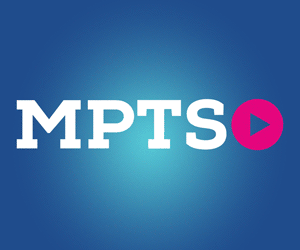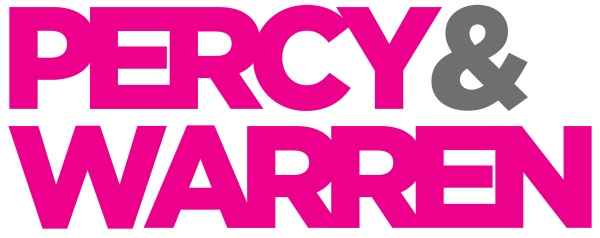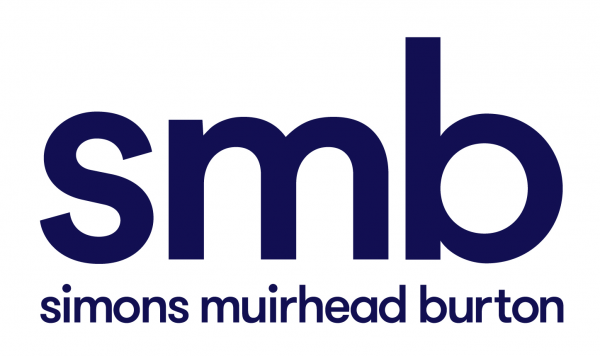A new apprenticeship post production technical operators, championed by UK Screen Alliance, is now available. The apprenticeship was developed in conjunction with a group of Trailblazer employers including Clear Cut Pictures, Technicolor, MPC, Fifty Fifty Post, Molinare, Company 3, Encore, Run VT, Edit Store, Platform and Pinewood.
This level 4 apprenticeship, which is equivalent to an HNC qualification, leads to jobs as machine room operators in post-production companies, VFX houses and specialist content delivery companies. It is also suitable not only to post-production companies operating in TV, film and advertising, but also to in-house edit assistants working at indie production companies.
“Post production technical operators are key to smooth running of a post-production facility. The role became more challenging following the transition to end-to-end digital workflows and this apprenticeship will provide the essential knowledge and skills to give trainees a solid foundation for a successful career.”
Rowan Bray, MD of Clear Cut, Chair of the Trailblazer group
Two years in-the-making, the development of the apprenticeship was assisted by secretariat support paid for by the High-end TV Skills Fund administered by ScreenSkills.
“We wanted to support the development of this apprenticeship because technical operators are such an important part of the post-production process and we know that the technical demands are increasing all the time. It is also part of our broader work using industry contributions to the skills fund to help find, train and retain the skilled and inclusive workforce that high-end television production needs.”
Kaye Elliott, Director of the ScreenSkills High-end TV Skills Fund
The course covers best practice for media ingest, storage management, media export, secure digital despatch, support for creative colleagues in content finishing and quality assessment of finished content. Trainees are assessed for “operationally competence” after the 12-month apprenticeship by a multiple-choice exam, a professional discussion and practical tests under the eye of an independent assessor.
Industry trade body, UK Screen Alliance backed the apprenticeship from the start and CEO, Neil Hatton is one of its key authors.
“We want to raise the bar in technical skills for post production operators by ensuring that they don’t just learn how to do the necessary tasks by rote but instead have a deeper understanding of the theory behind the operational best practice as well”
Neil Hatton, CEO, UK Screen Alliance
Apprentices spend 20% of their working time in off-the-job training delivered by an approved training provider, whilst the remaining 80% is practical on-the-job training and experience provided by their employer.
The training costs around £9,000 per apprentice, but as this apprenticeship has been fully approved by the Institute for Apprenticeships and Technical Education, larger companies can purchase the off-the-job training out of their compulsory Apprenticeship Levy payments and smaller companies can receive a full subsidy to cover these costs.
“The government will pay 95% of the apprenticeship training cost for non-levy paying employers but UK Screen can better that via our ALT scheme. We have obtained promises from large employers in our sector with unspent levy, that they will donate a portion of that to small employers which will then cover 100% of the training costs. UK Screen’s role is to act as dating-agency to connect willing levy donors to smaller companies wanting to employ apprentices and to facilitate that transfer.”
Neil Hatton, CEO, UK Screen Alliance
The employer group selected London South Bank University (LSBU) to be the preferred training supplier for this apprenticeship. LSBU is delivering the ‘off-the-job’ elements of the apprenticeship in three blocks, spread over a year. The University was chosen by a panel of employers responsible for ensuring a high quality level of teaching and value for money for applicants.
Apprentices undergo an external independent assessment by AIM Assessment at the end of the one-year course, after which, successful apprentices will receive an officially recognised qualification. AIM Assessment will gauge operational competence via a multiple-choice knowledge test, a professional discussion with an independent industry experienced assessor and a demonstration of practical tasks.
Apprenticeship levy-paying employers can offset the training costs against their compulsory levy payments, but smaller companies that don’t pay the Levy could receive a 100% subsidy on the training cost by applying to the UK Screen Alliance ALT (Apprenticeship Levy Transfer Fund) which redistributes unused levy contributions from larger companies.
View the Post Production Technical Operator informational leaflet:
Apprentices can apply on the London South Bank University website:
LSBU webpage about the course
https://www.lsbu.ac.uk/study/course-finder/post-production-technical-operator-apprenticeship
A video recording of the virtual information session for the Post Production Technical Operator Apprenticeship 2021 cohort can be viewed in the section below:
Summary of the apprenticeship for Post Production Technical Operators
Typical roles: Technical Operator, MCR Operator, Grade/Edit Assistant, Offline Assistant, Data Wrangler, Digital Imaging Technician (DIT), Dailies Operator, Quality Control Operator, Media Operator and Input/Output Operator
A Post Production Technical Operator is responsible for applying technical knowledge and understanding to the post production process in film, TV and Advertising. They are employed by audio and picture post-production companies, visual effects companies, broadcasters and by film and TV production companies who have their own post-production facilities. The Post Production Technical Operator is an entry level position into the Master Control Room (MCR) department. The main purpose of the role is to provide support, assistance and delivery within the technical operation at the post production company. The core objective of the roles is to ensure that the technical operations are fulfilled effectively and efficiently, through the post production process to the technical specification provided.
Each company engaged in post-production, of whatever size, employs Technical Operators to prepare, manage and deliver the assets and creative media handled during the post production process. These Technical Operators are known by a wide variety of job titles, depending on the area of expertise of their company or the specific services provided by their employer, however the core technical understanding that they use to do their work applies across the industry.
Core duties include (but are not limited to) first line technical and edit support for the bespoke workflow and lifecycle of the content in post production, media backup, media ingest and media export. The role is often shift based with early mornings, evenings, nights and weekend working and may involve working alone or as part of a larger team. Although it is a technical role, there is a need to understand and have an eye for the creative processes in post production such as editing, audio mixing and colour grading. The roles require an understanding of current digital file-based workflows as well as legacy media. Creatives in edit suites depend on the content of picture and audio files produced by technicians in this role.
Post Production Technical Operators are given high levels of responsibility with sensitive material, working to specific and varied technical standards within time limited deadlines.
Level
This apprenticeship is set at level 4
Duration
This apprenticeship will typically take 12 months to complete
KNOWLEDGE & UNDERSTANDING: A Post Production Technical Operator knows and understands:
- INDUSTRY OVERVIEW
- The purpose of post-production within the end-to-end production process
- The commercial context of post-production with the wider film, TV and commercials industry
- How to interface effectively with other departments and processes within a production
- WORKING PRACTICES
- How to deliver good customer service in a creative environment
- How to work effectively within a team
- The importance of accurate, effective and timely communication with the team and with customers to ensure efficient progress of the work in hand.
- How to comply with relevant health and safety legislation and company policy to ensure a safe working environment for themselves, colleagues and customers.
- VIDEO TECHNOLOGY
- The principles of video signals for film and TV in the digital and analogue domains including …
- RGB, YUV, colour sampling, sampling frequency, gamma, bit-depth, aspect ratios, frame rates
- Resolution including High Definition, Ultra High Definition, Standard Definition, 2k, 4k, 8k
- Colour science as applied in TV and digital film, including High Dynamic Range
- Stereoscopic 3D and 360-degree video for VR
- Display technologies such as OLED, LCD, projection systems and legacy CRT devices
- Legacy video formats/standards and conversion of these to current standards
- AUDIO TECHNOLOGY
- The principles of audio signals in the digital and analogue domains including…
- Audio basics from microphone to loudspeaker
- Mono, stereo, surround sound and object based audio
- Audio levels and loudness
- METADATA, LOGGING AND LABELING
- The use of metadata and other forms of content documentation
- The use of timecode and other frame labelling protocols
- The protocols for unambiguous labelling of content using clock numbers and file naming conventions
- FILE FORMATS AND COMPRESSION
- The audio and video file formats, wrappers and codecs in common use in content acquisition, post-production and delivery, including RAW, R3D, ProRes, AVC, H264, MPEG, XDCAM, DNxHD, JFIF, MP3, WAV, Quicktime, MXF, MP4, AS-11, IMF, DCP, AAF etc.
- The file formats used for still images and graphics held as bitmaps or vector images including RAW, JPEG, TIF, GIF, PNG, Photoshop, EPS etc.
- The file formats used for moving images held as sequential single frame files including DPX, TIF etc.
- The underlying principles of encoding, transcoding and compression of digital audio and video content
- WORKFLOW AND TROUBLESHOOTING
- The functional role, capabilities and limitations of the equipment used in the post-production workflow and strategies for their efficient use
- The importance of agreed workflows and pipelines and how these may be adapted to meet the bespoke needs of a production
- The principles of non-linear editing systems
- How to provide operational assistance and first-line support to creative personnel in editing, colour grading, audio dubbing and content mastering
- Technical and operational problem solving within agreed governance constraints
- IT AND COMPUTER SYSTEMS
- The principles of computer systems, IP networks and shared storage systems as applied in post-production
- Connection types for portable storage devices (e.g. USB, Thunderbolt)
- Business continuity procedures
- The principles of effective content security measures both electronic and physical
- The principles of high speed file transfer across LAN and WAN
- QUALITY CONTROL
- The technical standards and customer specifications used for UK and international delivery of programmes, films and commercials to cinema, TV broadcast and online distribution platforms
- The requirements of international productions to aid localisation, such as M&E tracks, STEMS and textless backgrounds
- The correct environment for quality control and assessment
- The EBU model for the classification of quality issues and the ITU 5-point quality assessment scale
- The correct terminology for the description of sub-optimal quality issues
- The regulations and issues regarding flashing images and stimuli causing photo sensitive epilepsy
- The regulations and specifications for on-screen text and graphics such as safe areas, minimum text height and minimum durations for legal information in commercials
- The importance of intelligibility of dialogue and how this is impacted by a complex range of factors, especially age-related hearing loss
- MEDIA CONTENT MANAGEMENT
- The management of media throughout the data lifecycle including storage, archiving and timely access to media content at the required quality as required at various stages of the production
- The principles of good digital content governance, resilience, security, confidentiality and the value of media content to the business and its customers
- The protocols for secure and audited receipt and despatch of content via physical media and electronic transfer
SKILLS: A Post Production Operator is able to:
- GENERAL SKILLS
- Work in line with agreed workflows, adapting to changes as they occur
- Interpret the work order and technical specification to fully understand the requirements of the scheduled jobs
- Use process documentation and work order reporting systems for efficient, accurate and timely communication with other departments about the progress of the work in hand
- Multitask on simultaneous projects (often for different clients) and prioritise the work to ensure that all tasks are completed on schedule
- Follow organisational Health and Safety policies and practices
- Identify, mitigate and report any incidents or risk to the appropriate person
- Deliver good customer service in a creative environment
- MEDIA INGEST, EXPORT AND DELIVERY
- Despatch and receive physical assets to/from external organisations and audit the process
- Securely transfer data between client supplied sources and post production storage systems, performing data integrity and virus checks.
- Ingest and export media content and metadata to/from post-production systems, syncing the audio to video and applying colour transforms (LUTs) as necessary
- Encode and transcode audio and video data to required specifications
- Export finished content with metadata from post production systems to required specifications
- Advise clients on an appropriate file specification for a given requirement
- Use file transfer software for fast, secure and audited delivery of assets to external destinations
- SUPPORT CREATIVE COLLEAGUES
- Provide frontline operational support to clients in editing suites to ensure that they can find and work with their media
- Take ownership to resolve and/or escalate faults/incidents to the appropriate person
- Connect and set-up equipment using appropriate cables and connectors
- Perform and check data conforms of sequences prior to colour grading or online editing
- Relink ingested media to updated sequences as editorial changes occur
- Prepare audio data for transfer to dubbing suite
- Perform basic manipulation (resize, crop, CMYK to RGB etc) of graphics and still images using software such as Photoshop
- Perform basic editing functions necessary for the preparation of media and sequences for creative processes, or for formatting of finished content for delivery (e.g. adding line-up signals, clocks or patching in QC fixes, audio laybacks)
- QUALITY CONTROL
- Assess and advise on the technical quality of sound, pictures and data to colleagues, customers and suppliers
- Perform technical Quality Assessment Reviews of finished content in accordance with technical specifications and client requirements
- Use audio and video test and monitoring equipment to measure signal parameters
- Interpret the results of reports from audio and video test equipment
- Consistently spot faults in media content and use the correct terminology to describe them accurately
- Take an objective and pragmatic view of quality control and decide what is acceptable and what is not depending on the context of the material and its intended use
- Write accurate and concise Quality Assessment Reports with clear indications of mandatory failures and advisory warnings
- MEDIA MANAGEMENT
- Manage media on post production storage systems to ensure that the right resolution is available at the right time
- Manage access by clients to shared storage systems
- Backup, archive and restore media, sequences and metadata according to company practice
- Safely delete media as instructed
- Comply with the content security policies of the employer and their clients
- LEGACY STANDARDS AND TECHNOLOGY
- Digitise/batch-digitise/auto-conform from videotape {optional}
- Playout from post-production systems to legacy videotape {optional}
- Perform legacy tape to tape transfer operations to broadcast standards {optional}
BEHAVIOURS
- Working effectively both individually and collaboratively as part of a team
- Communicate clearly and concisely using appropriate discretion
- Build and maintain positive relationships with colleagues, customers and suppliers
- Demonstrate a passion for post production, the media industry and its productions
- Work accurately with a high degree of attention to detail
- Display a strong work ethic and commitment to meet the standards required
- Think creatively and logically to solve technical issues
- Contribute to a process continual improvement of workflow and technique
- Proactively keep up to date with latest developments within the industry
- Uphold ethical and professional standards
- Maintain company and customer confidentiality
- Be an ambassador for their employer
Qualifications – Apprentices without level 2 English and Maths will need to achieve this level prior to taking the end-point assessment.
Review date – This standard will be reviewed three years from publication.
The full details of the apprenticeship standard and the assessment plan can be found on the Institute for Apprenticeships website.









